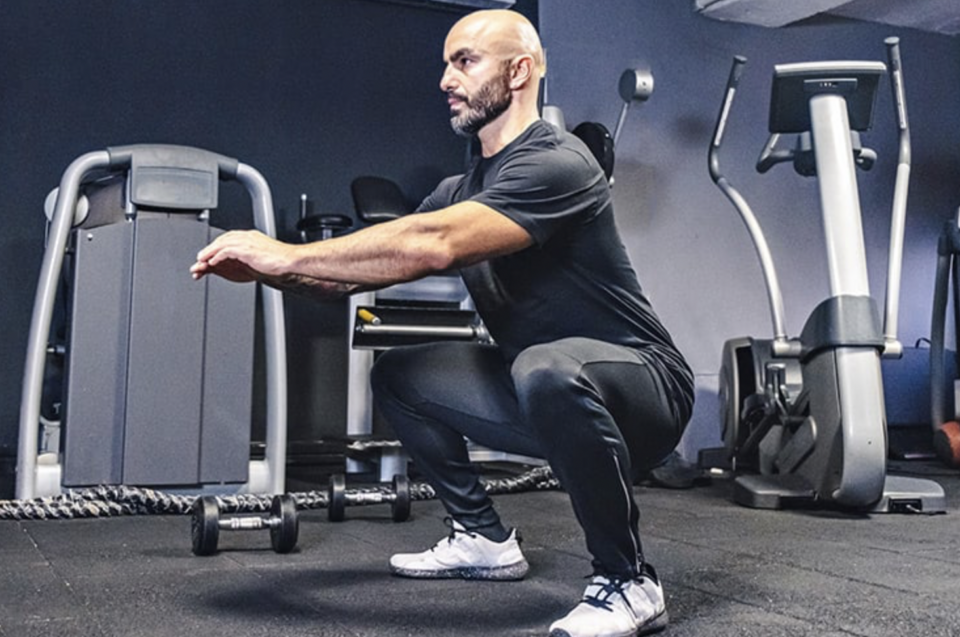As one approaches their late thirties, it’s not uncommon to hear older friends or relatives lament about the inevitable decline in physical vitality, often characterized by aches, diminished energy, and the onset of what’s colloquially referred to as the “middle-aged spread.” The prevailing notion is that with age comes fat gain, muscle loss, and a reduction in overall strength, among other markers of fitness. While this is indeed a common narrative, it’s crucial to understand that it doesn’t have to be the norm or an inescapable fate. Contrary to widespread belief, there’s a wealth of scientific evidence suggesting that much of the physical decline attributed to aging is preventable and manageable.
The term used to describe age-related muscle loss is “sarcopenia.” Sarcopenia is characterized by a gradual reduction in muscle mass and function, often leading to a decline in physical performance, an increased risk of falls, functional decline, frailty, and mortality. While sarcopenia affects most people as they age, the key question is when it sets in and to what extent. Recent research has shed light on these aspects, providing encouraging insights for those approaching their forties.
Contrary to the assumption that physical decay is an unavoidable consequence of aging, numerous studies indicate that it’s not primarily age itself that leads to muscle and strength loss but rather lifestyle choices and environmental factors. Many of us inadvertently slide into unhealthy routines as we age, such as becoming more sedentary, prioritizing work over fitness, and adopting poor dietary habits. These decisions often have a more significant impact on physical decline than age alone.
It’s important to note that the age at which peak physical performance is achieved varies significantly across different sports. Strength-based athletes, like powerlifters and bodybuilders, tend to peak later in life. For instance, powerlifters often reach their prime around the age of 35, and many iconic bodybuilders achieved their best results in their thirties and forties. High-achieving athletes in these sports demonstrate that age is not the primary determinant of muscle growth and strength development up to the age of 40.
However, what about maintaining progress after the age of 40? While elite-level sports performance beyond this age may be limited for various reasons, including changes in motivation, lifestyle priorities, injuries, or complacency, the research strongly suggests that age itself isn’t the dominant factor in muscle and strength loss. Instead, it’s the life choices we make and the environment we create for ourselves that play a more critical role. Many older adults can continue to maintain and even improve their physical condition through appropriate training, nutrition, and recovery strategies.
To thrive as you age, it’s vital to continue training to enhance strength in fundamental movement patterns and prioritize recovery. These patterns include squatting, lunging, hip-hinging, pushing, pulling, and carrying. Additionally, grip strength training can be particularly beneficial, as it’s linked to healthy aging, mental function, and overall strength. Sled work is another effective training method that reduces the risk of injury while promoting muscle growth.
From a dietary perspective, consuming sufficient protein throughout the day, especially at breakfast and lunch, can help overcome age-related anabolic resistance and support muscle maintenance. High-quality protein sources like meat, fish, eggs, and dairy, rich in essential amino acids, are crucial. Moreover, distributing protein intake evenly across multiple meals has a significant impact on muscle protein synthesis.
In summary, while aging is a natural process, the physical decline often associated with it can be significantly influenced by our choices. By staying active, prioritizing a balanced diet with adequate protein, and adopting sound training and recovery practices, individuals can maintain their strength, muscle mass, and overall physical well-being well into their forties and beyond. Age does not have to equate to a decline in fitness; rather, it can signify an opportunity for continued vitality and health.

